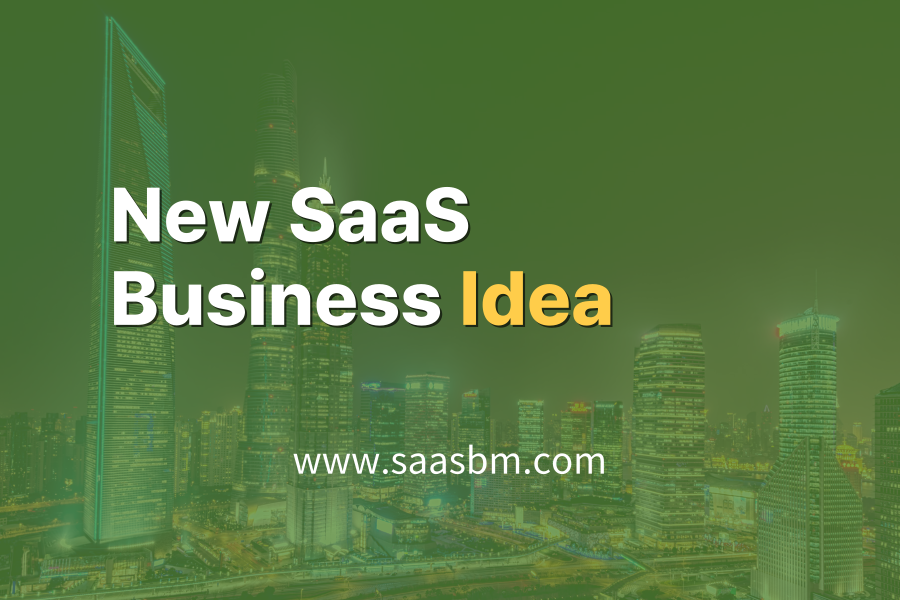Here are two new business ideas inspired by a benchmarked SaaS model.
We hope these ideas help you build a more compelling and competitive SaaS business model.
- Benchmark Report: Transform Your Workflow: How Pipefy’s Revolutionary Process Automation Platform Boosts Efficiency
- Homepage: https://www.pipefy.com
- Analysis Summary: Pipefy delivers a powerful workflow automation platform that helps businesses streamline operations, eliminate manual tasks, and optimize processes with no-code solutions.
-
New Service Idea: KnowledgeBites / ProcessGPT
Derived from benchmarking insights and reimagined as two distinct SaaS opportunities.

[swpm_protected for=”3,4″ custom_msg=’This report is available to Growth and Harvest members. Log in to read.‘]
![]()
1st idea : KnowledgeBites
An AI-powered micro learning automation platform that transforms corporate training through personalized, bite-sized learning experiences.
Overview
KnowledgeBites is a revolutionary micro learning automation platform that transforms how organizations deliver training content to their employees. Building upon Pipefy’s process automation expertise, KnowledgeBites creates and delivers personalized, bite-sized learning experiences that are automatically integrated into employees’ daily workflows. The platform uses AI to break down complex training materials into digestible 5-minute modules, schedules them at optimal times based on individual work patterns, and tracks knowledge retention through brief assessments. By embedding learning directly into existing processes rather than treating it as a separate activity, KnowledgeBites significantly increases knowledge retention while reducing training time and costs. The platform addresses the critical problem of traditional corporate training being ineffective, time-consuming, and quickly forgotten by employees.
![]()
Who is the target customer?
▶ Corporate training managers struggling with low engagement and retention rates
▶ Operations leaders looking to reduce time spent on traditional training methods
▶ Knowledge-intensive industries (healthcare, financial services, technology) with complex compliance requirements
![]()
What is the core value proposition?
![]()
How does the business model work?
• Content Marketplace: Revenue sharing model with third-party content creators who develop industry-specific micro learning modules. KnowledgeBites takes a 30% commission on all content purchases.
• Custom Content Creation Services: Premium service where the KnowledgeBites team transforms existing company training materials into optimized micro learning modules for a one-time fee based on content volume.
![]()
What makes this idea different?
![]()
How can the business be implemented?
- Develop core AI algorithm for content fragmentation and workflow pattern analysis, partnering with educational psychologists to optimize learning methodology
- Build integration framework with popular workflow platforms (starting with Pipefy) through API connections and implementing OAuth authentication
- Recruit initial content creation partners to develop industry-specific micro learning modules for the marketplace
- Launch beta program with 10-15 mid-sized companies across different industries to gather implementation data and refine user experience
- Develop analytics dashboard for HR leaders to track engagement, retention, and ROI metrics with visualization tools that highlight knowledge gaps and learning trends
![]()
What are the potential challenges?
• Content quality control: Maintaining high standards across third-party content marketplace will be crucial. Implement a rigorous review process and feedback system where poorly rated content is automatically flagged for improvement.
• Proving ROI to potential customers: Traditional training metrics won’t apply to this new approach. Develop case studies from beta customers with concrete metrics showing improvements in both learning outcomes and productivity to demonstrate clear value proposition.

2nd idea : ProcessGPT
An AI co-pilot for business processes that learns, optimizes, and automates workflows based on human interactions and outcomes.
![]()
Overview
ProcessGPT is an innovative AI companion that sits alongside existing workflow processes, continuously learning from human interactions to identify optimization opportunities and gradually automate routine decisions. Unlike traditional process automation tools like Pipefy that require explicit configuration, ProcessGPT uses machine learning to observe how humans handle various situations within a process, recognize patterns, and eventually suggest or even implement improvements. The system acts as an intelligent “co-pilot” for business processes – first learning by watching, then making suggestions, and ultimately handling routine decisions autonomously while escalating exceptions to human operators. ProcessGPT addresses the significant gap between rigid process automation systems and the dynamic, judgment-based nature of many business workflows, especially those involving customer interactions, approvals, or exception handling.
![]()
Who is the target customer?
▶ Customer service organizations looking to standardize response quality while maintaining human touch
▶ Financial services companies with complex approval workflows requiring judgment but containing repetitive elements
▶ Mid-market companies (100-1000 employees) that lack resources for custom enterprise automation solutions
![]()
What is the core value proposition?
![]()
How does the business model work?
• Decision Model Library: Marketplace for pre-trained decision models for common business processes (customer onboarding, claim processing, etc.) available on a per-use licensing basis starting at $5,000 for basic models.
• Implementation Services: Professional services for complex implementations, custom integrations, and advanced use cases charged at $200-$250/hour depending on complexity and expertise required.
![]()
What makes this idea different?
![]()
How can the business be implemented?
- Develop core observation framework with API integrations to major workflow platforms (including Pipefy) to begin collecting process interaction data
- Build reinforcement learning engine that identifies patterns in human decision-making within business processes
- Create natural language interface for system-human interactions, allowing ProcessGPT to ask clarifying questions about decisions
- Partner with 3-5 mid-sized companies across different industries for pilot implementation, focusing on processes with high volume but requiring judgment
- Develop confidence scoring system and progressive autonomy framework that gradually increases automation levels as the system demonstrates reliable decision-making
![]()
What are the potential challenges?
• Initial learning curve: The system requires sufficient observation time before providing value. Address by developing pre-trained models for common process types that can be customized rather than built from scratch, and clearly setting customer expectations about ramp-up periods.
• Change management resistance: Employees may resist a system that observes their work. Mitigate through transparent communication about how the system augments rather than replaces human judgment, and implementing feedback mechanisms where employees can correct and improve the system’s understanding.
[/swpm_protected]

No comment yet, add your voice below!